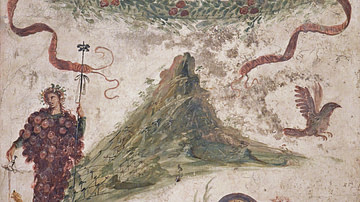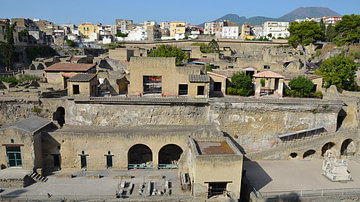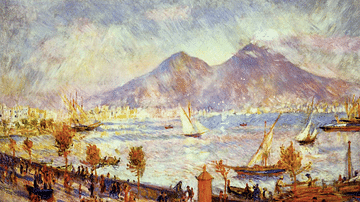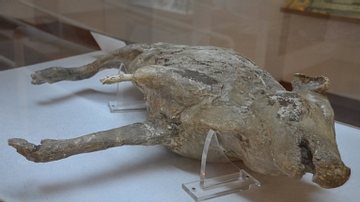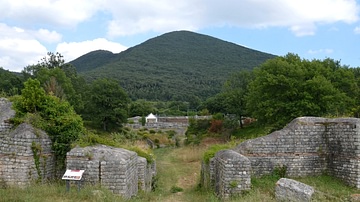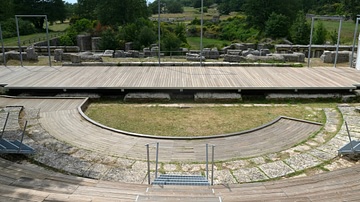Illustration
The excavated ruins of Pompeii in the foregreound with the volcano Mt. Vesuvius in the background.
Along with Herculaneum, its sister city, Pompeii was destroyed and completely buried during a long catastrophic eruption of the volcano Mount Vesuvius spanning two days in 79 AD. The eruption buried Pompeii under 4 to 6 meters of ash and pumice, and it was lost for over 1,500 years before its accidental rediscovery in 1599. Since then, its excavation has provided an extraordinarily detailed insight into the life of a city at the height of the Roman Empire. Today it is a UNESCO World Heritage Site.
Cite This Work
APA Style
mchen007. (2012, April 26). Pompeii and Mt. Vesuvius. World History Encyclopedia. Retrieved from https://www.worldhistory.org/image/301/pompeii-and-mt-vesuvius/
Chicago Style
mchen007. "Pompeii and Mt. Vesuvius." World History Encyclopedia. Last modified April 26, 2012. https://www.worldhistory.org/image/301/pompeii-and-mt-vesuvius/.
MLA Style
mchen007. "Pompeii and Mt. Vesuvius." World History Encyclopedia. World History Encyclopedia, 26 Apr 2012. Web. 13 Apr 2025.

